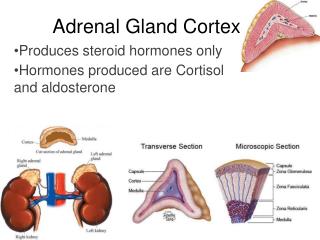


However, chronically elevated glucocorticoid levels alter body protein synthesis, fat distribution, increase visceral adiposity, and are responsible for metabolic abnormalities, such as hypertension, type 2 diabetes, or sleep disturbance. Glucocorticoids (cortisol, corticosterone, cortisone) are implicated in a broad range of metabolic functions, including anti-inflammatory responses, stress response, and behavior. ACTH is the main stimulus of the zona fasciculata and zona reticularis, stimulating glucocorticoids secretion, while angiotensin II and potassium are the main stimuli of aldosterone secretion by the zona glomerulosa. The adult mammalian adrenal cortex is composed of three concentric layers, each having specific functional and morphological properties. The Research Topic also reviews the pathological consequences of the disruption of specific components of these pathways. This Research Topic is a compendium of reviews and original contributions, which summarize classical views, novel findings, and challenges on the various mechanisms involved in ACTH action, from the binding of ACTH to its receptor to steroid secretion. It is also important to remember that Selye was the first to describe “corticoids” and to propose that glucocorticoids and mineralocorticoids (also named by Selye) regulated not only carbohydrate and electrolyte metabolism, respectively, but also exerted anti- or pro-inflammatory effects ( 2, 4, 5).īy stimulating adrenal corticosteroids synthesis, the ACTH, first isolated in 1943 ( 6) and then synthesized in 1960s and 1970s (see the review by Ghaddhab et al.), plays a central role in homeostasis and stress response and thus is a key component of the HPA axis. Because it was clear that most people viewed stress as some unpleasant threat, Selye had to create a new word, “stressor,” in order to distinguish between stimulus and response ( 3). It was Walter Cannon who actually developed the term stress in his work relating to the fight-or-flight response in 1914 ( 2, 3). From a historical standpoint, Selye actively avoided using the term “stress” until 1946. The system whereby the body copes with stress, the hypothalamo–pituitary–adrenal (HPA) axis, was also first described by Szabo et al. Selye described the general adaptation syndrome, later renamed stress, as a response of the body to demands placed upon it.

With this Research Topic, we want to celebrate 80 years of research on the role of adrenocorticotropic hormone (ACTH) on the adrenal cortex, from the pioneering work by Selye, who introduced the concept of “general adaptation syndrome” in a short Letter to Nature ( 1). ACTH Action in the Adrenal Cortex: From Molecular Biology to Pathophysiology


 0 kommentar(er)
0 kommentar(er)
